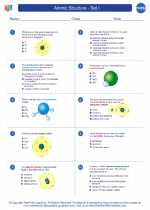Vascular Tissue
Vascular tissue is a complex tissue found in higher plants, and it is responsible for the transport of water, minerals, and nutrients throughout the plant. There are two main types of vascular tissue: xylem and phloem.
Xylem
Xylem is responsible for the transport of water and minerals from the roots to the rest of the plant. It is composed of several types of cells, including tracheids, vessel elements, fibers, and parenchyma cells. The tracheids and vessel elements are the main water-conducting cells and are characterized by their lignified cell walls, which provide structural support to the plant. The movement of water through xylem is driven by transpiration, the loss of water vapor from the plant’s leaves.
Phloem
Phloem is responsible for the transport of nutrients, such as sugars, from the leaves to the rest of the plant. It is composed of sieve tube elements, companion cells, fibers, and parenchyma cells. The sieve tube elements are the main conducting cells and are arranged end to end to form sieve tubes. These cells are alive and are connected by sieve plates, allowing for the movement of nutrients through the plant via a process called translocation.
Functions of Vascular Tissue
Vascular tissue plays a crucial role in the overall health and growth of the plant. It provides a means for the transportation of essential substances, such as water, minerals, and sugars, which are necessary for various physiological processes, including photosynthesis, growth, and reproduction.
Study Guide
- Describe the structure and function of xylem.
- Explain the process of water transport through xylem.
- Identify the main types of cells found in phloem and their functions.
- Discuss the process of translocation in phloem.
- Explain the importance of vascular tissue in plant physiology.
[Vascular Tissue] Related Worksheets and Study Guides:
.◂Chemistry Worksheets and Study Guides High School. Atomic Structure - Set I

 Worksheet/Answer key
Worksheet/Answer key
 Worksheet/Answer key
Worksheet/Answer key
